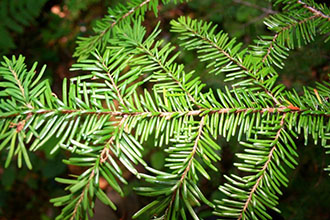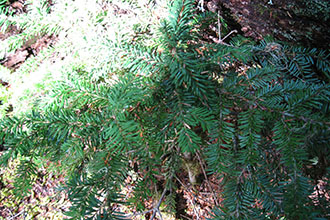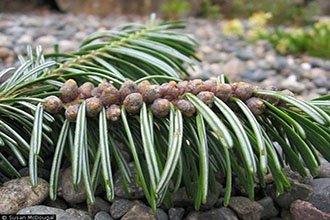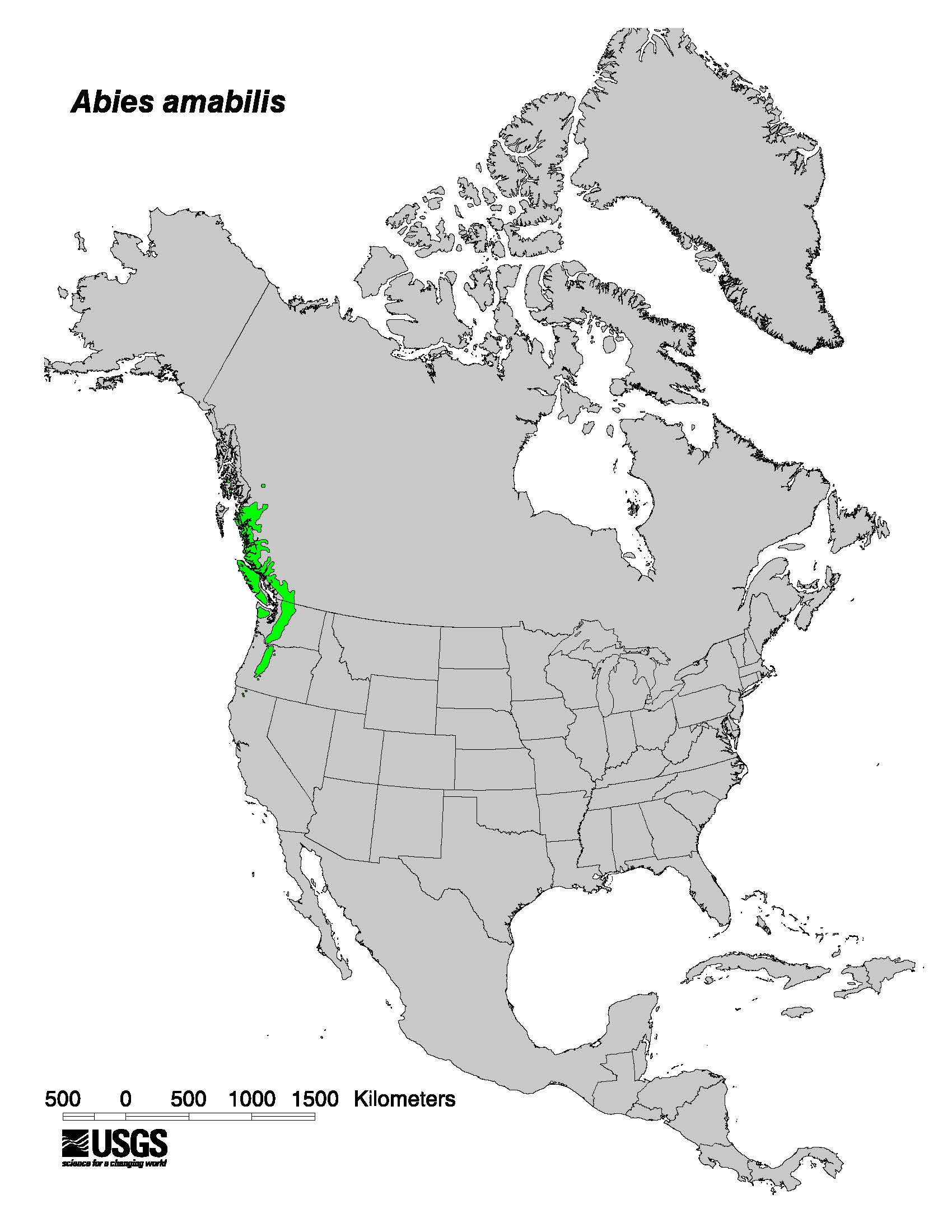Taxonomy: Kingdom - Plantae (plants). Subkingdom - Tracheobionta (vascular plants). Superdivision - Spermatophyta (seed plants). Division - Coniferophyta (conifers). Class - Pinopsida. Order - Pinales. Family - Pinaceae (pine). Genus -Abies Mill. Species - Abies amabilis Dougl. ex J. Forbes
Ecology: Pacific silver fir commonly occurs in late seral or climax mixed-conifer stands. Throughout its range the most commonly associated conifer is western hemlock (Tsuga heterophylla). Pacific silver fir also reportedly grows in extensive pure stands in parts of the southern Washington Cascade Range. The climate throughout the range of Pacific silver fir is maritime to submaritime. Pacific silver fir is usually submontane to subalpine. It thrives in areas that receive a great deal of precipitation.



